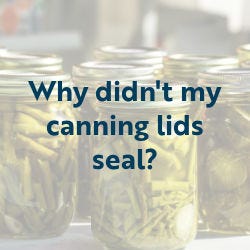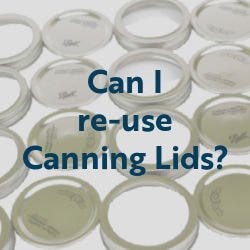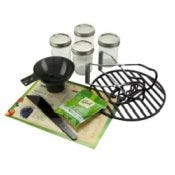
Why is it important to Bubble your jars?
There are a number of reasons why it’s important to bubble your jars before capping and canning them. Not bubbling your jars can result seal failures and/or spoiling product. Generally, you do not want any additional air to be trapped in your jars prior to processing.
What does “Bubble your jars” mean?
 If your recipe includes the step to “bubble your jars”, this means that you will use a kitchen tool to run along the inside of your canning jars in order to encourage any existing bubbles to rise to the top of your product. Note: you don’t want to use anything that would scratch the glass. A small spatula, plastic knife, handle of a wooden spoon, a clean chopstick, or the plastic headspace guide that often comes in canning kits will do the trick. The goal is to remove as much of the trapped air as possible before you put the lid on your jar and create a closed system.
If your recipe includes the step to “bubble your jars”, this means that you will use a kitchen tool to run along the inside of your canning jars in order to encourage any existing bubbles to rise to the top of your product. Note: you don’t want to use anything that would scratch the glass. A small spatula, plastic knife, handle of a wooden spoon, a clean chopstick, or the plastic headspace guide that often comes in canning kits will do the trick. The goal is to remove as much of the trapped air as possible before you put the lid on your jar and create a closed system.
Why is it important to remove the air from your canning jars?
There are several complications that can arise if you don’t remove the trapped air.
More headspace/Less Vacuum: As your jars heat in the canner, the air bubbles that were trapped inside your product will move up in order to escape and be added to your planned headspace. There is a delicate balance of product to empty space (air) in preserving – which is why headspace is dictated. This movement can interfere with the proper formation of vacuum, as the air from that headspace may not release as it should. Sometimes this simply means that the vacuum isn’t as strong, and doesn’t always result in a seal failure. However, you will want to pay attention to the extent of the impact and should plan on using them first.
Liquid Loss: As the bubbles are forced up through the product during the canning process, liquid may be pushed out of the jar. Whether it’s brine or syrup, and how much has escaped, this may require you to wash off your cooled jars before placing them in your pantry. And, it may mean that you need to refresh your canning water…and bring another pot of water up to temperature. If your seal is still properly intact (and isn’t just staying on because of the sticky), your items should still be fine…just plan to use those first.
Seal Interference/Seal Failure: During the above liquid loss, sometimes particles come along for the ride. Bits of your product, seeds, spices can get lodged between the rim of your jar and the plastisol liner where the seal is to happen. Often, this will cause a seal failure that is noticeable as your jars cool. If you find this, put the jar in the refrigerator and consume it quickly. Sometimes when this happens it’s not detectable before the product gets placed into the pantry. Over time, the situation can develop differently depending on whether the interfering particle just results in a weaker seal, or if it stretches across the width of the sealing surface and allows air/organisms to cross and facilitating spoilage. If this happens, the contents should be discarded immediately upon discovery.
For more resources on home canning, check out our Resources for Home Canning page.











1 Comment